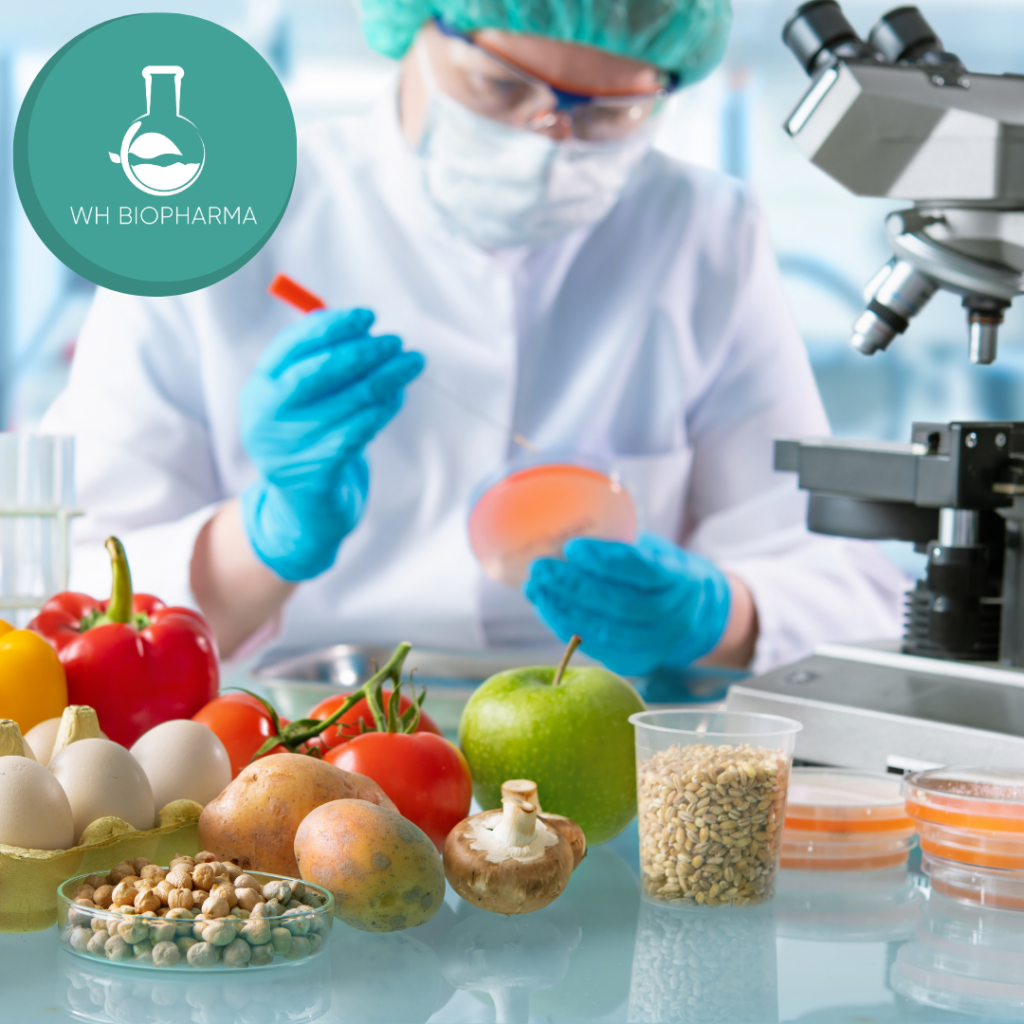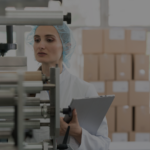The food industry is constantly evolving, driven by consumer demands, technological advancements, and the need for efficient production processes. At the heart of this transformation lies the realm of food manufacturing equipment and machinery. These innovative tools play a pivotal role in revolutionizing the way food is produced, processed, and packaged. In this blog post, we will delve into the latest trends shaping the food industry and explore the cutting-edge technologies that are driving the evolution of food manufacturing equipment.
Automation and Robotics: Streamlining Production Processes
In recent years, automation and robotics have become game-changers in the food manufacturing industry. With the increasing demand for efficiency, consistency, and cost-effectiveness, food manufacturers are turning to these technologies to streamline their production processes. Automation and robotics offer numerous benefits that revolutionize the way food is manufactured, ensuring higher productivity, improved quality control, and enhanced operational efficiency.
Increased Productivity
Automation and robotics have the potential to significantly increase production output. By automating repetitive tasks, such as sorting, packaging, and assembly, manufacturers can achieve higher production volumes in shorter timeframes. Robots can work tirelessly without experiencing fatigue or requiring breaks, resulting in optimized production lines and improved overall productivity.
Improved Quality Control
Maintaining consistent quality is paramount in the food industry. Automation and robotics play a crucial role in ensuring that products meet stringent quality standards. With precision and accuracy, robotic systems can perform tasks with minimal errors, reducing the risk of human-related inconsistencies. Sensors and cameras integrated into robotic systems enable real-time monitoring, allowing immediate detection and correction of any quality issues, ensuring that only products of the highest standards reach the market.
Enhanced Food Safety
Food safety is a critical concern for both manufacturers and consumers. Automation and robotics contribute to safer production environments by minimizing the risk of contamination. With automated processes, there is reduced human contact with food, minimizing the potential for contamination from pathogens or foreign substances. Additionally, robotic systems can be designed with sanitary materials and easy-to-clean surfaces, ensuring compliance with strict hygiene standards.
Efficient Resource Utilization
Automation and robotics optimize the utilization of resources such as raw materials, energy, and time. Through precise measurements and controlled dispensing, automated systems minimize waste and ensure accurate ingredient proportions. Robots can also operate in energy-efficient modes, reducing overall energy consumption. Furthermore, automated processes enable faster production cycles, reducing time-to-market and maximizing the utilization of available resources.
Worker Safety and Ergonomics
The integration of automation and robotics in food manufacturing contributes to improved worker safety and ergonomics. By automating physically demanding or hazardous tasks, manufacturers can protect their employees from potential injuries or health risks. Workers can be assigned to more value-added roles, focusing on tasks that require human judgment and expertise. Automation also reduces repetitive motions and ergonomic strain, enhancing the overall well-being and job satisfaction of the workforce.
Scalability and Flexibility
Automation and robotics offer scalability and flexibility in food manufacturing operations. Modular systems can be easily expanded or reconfigured to accommodate changing production needs or the introduction of new products. Automated processes can adapt to different packaging formats, sizes, and labeling requirements, enabling manufacturers to quickly respond to market demands and customization requests. This flexibility enhances agility and allows for efficient production planning and resource allocation.
Data-driven Insights
Automation and robotics generate vast amounts of data during the production process. Manufacturers can harness this data through advanced analytics and machine learning algorithms to gain valuable insights into their operations. These insights help optimize production workflows, identify bottlenecks, predict maintenance needs, and make data-driven decisions for continuous improvement. With real-time data monitoring and analysis, manufacturers can proactively address issues, minimize downtime, and maximize overall efficiency.
Advanced Sensor Technologies: Ensuring Food Safety and Quality
Ensuring food safety and maintaining product quality are top priorities for food manufacturers. To meet these objectives, the industry is embracing advanced sensor technologies. These sensors monitor various parameters such as temperature, humidity, and contaminants in real-time, enabling early detection of any anomalies that could compromise the safety or quality of the food. With the integration of Internet of Things (IoT) capabilities, manufacturers can now collect and analyze vast amounts of data, allowing for proactive quality management and reducing the risk of product recalls.

Contaminant Detection: Advanced sensors play a crucial role in detecting contaminants in food products. They can identify foreign objects, such as metal, glass, or plastic, ensuring that contaminated products are promptly identified and removed from the production line. Sensor technologies like X-ray inspection systems, metal detectors, and optical scanners offer high levels of sensitivity and precision, minimizing the risk of contaminated products reaching consumers.
Quality Control and Inspection: Sensors enable comprehensive quality control and inspection during food production. They can monitor critical parameters such as temperature, humidity, pH levels, and moisture content in real-time. This continuous monitoring ensures that food products meet specific quality standards and remain within safe operating conditions. Any deviations or abnormalities are quickly detected, allowing for immediate corrective actions to maintain product quality.
Pathogen and Microorganism Detection: Ensuring the absence of harmful pathogens and microorganisms in food is vital for consumer safety. Advanced sensor technologies, including DNA-based assays, polymerase chain reaction (PCR), and biosensors, can detect the presence of pathogens, such as E. coli, Salmonella, and Listeria, with high accuracy and sensitivity. Rapid detection of these pathogens enables swift containment and prevention of widespread contamination, safeguarding public health.
Shelf-Life Monitoring: Sensors can monitor and analyze various factors that affect the shelf life of food products. They can measure parameters like temperature, oxygen levels, and microbial activity, providing real-time data on product freshness and spoilage. By accurately assessing product quality and freshness, manufacturers can optimize inventory management, minimize waste, and ensure that consumers receive products with extended shelf life and optimal sensory attributes.
Allergen Detection: Allergen contamination can pose severe risks to individuals with specific dietary restrictions or allergies. Sensor technologies can detect and quantify the presence of allergens, such as peanuts, tree nuts, gluten, and dairy, in food products. This enables manufacturers to implement strict allergen control measures, prevent cross-contamination, and accurately label allergenic ingredients, ensuring the safety of consumers with dietary sensitivities.
Process Monitoring and Optimization: Sensors provide real-time insights into the various stages of food processing, enabling manufacturers to monitor and optimize critical parameters. For example, sensors can monitor temperature and humidity during cooking or baking processes to ensure proper heat transfer and avoid undercooking or overcooking. By fine-tuning processing parameters based on sensor data, manufacturers can enhance consistency, minimize variations, and improve overall process efficiency.
Data Analytics and Traceability: Advanced sensor technologies generate large volumes of data. By leveraging data analytics, manufacturers can derive valuable insights into their production processes, identify trends, and optimize operations. Sensor data combined with traceability systems can track the journey of ingredients from farm to fork, enabling rapid identification and targeted recalls in the event of safety concerns. This enhances transparency, accountability, and consumer trust in the food supply chain.
Sustainable Solutions: Balancing Efficiency and Environmental Impact
The food industry is increasingly recognizing the importance of sustainable practices and minimizing its environmental footprint. In response, food manufacturing equipment is being designed with sustainability in mind. Energy-efficient machinery, waste reduction technologies, and eco-friendly packaging solutions are gaining prominence. For instance, innovative systems are being developed to optimize energy consumption during food processing, while biodegradable and recyclable packaging materials are replacing traditional single-use options. These advancements not only contribute to environmental conservation but also align with the growing consumer preference for sustainable products.
Customization and Flexibility: Catering to Diverse Consumer Needs
The modern consumer is increasingly seeking personalized food products that align with their unique dietary preferences, allergies, or lifestyle choices. To cater to these diverse demands, food manufacturers are adopting equipment that allows for customization and flexibility in production. Modular machinery setups and adaptable production lines enable swift product changeovers, minimizing downtime and increasing efficiency. Additionally, advancements in digitalization and data-driven technologies enable manufacturers to gather consumer insights and rapidly respond to market trends, ensuring their product offerings remain relevant and appealing.

Intelligent Data Analytics
Data analytics and artificial intelligence (AI) are revolutionizing the food manufacturing landscape. By harnessing the power of big data, manufacturers can gain valuable insights into their operations, identify areas for improvement, and optimize efficiency and yield. Predictive analytics can help anticipate maintenance needs, reduce downtime, and optimize production schedules. AI-powered quality control systems can detect defects or inconsistencies in real-time, ensuring only products that meet stringent standards reach the market. These data-driven approaches empower manufacturers to make informed decisions, enhance operational efficiency, and drive continuous improvement.

The food industry is experiencing a profound transformation, with food manufacturing equipment and machinery at the forefront of this revolution. The latest trends discussed in this blog post, including automation and robotics, advanced sensor technologies, sustainable solutions, customization and flexibility, and intelligent data analytics, are reshaping the way food is produced, ensuring safety, quality, and efficiency. As these technologies continue to evolve, the food industry will witness even greater advancements, pushing the boundaries of innovation and meeting the changing needs and expectations of consumers worldwide. By embracing these trends, food manufacturers can stay ahead of the competition and contribute to a sustainable and thriving food industry.





